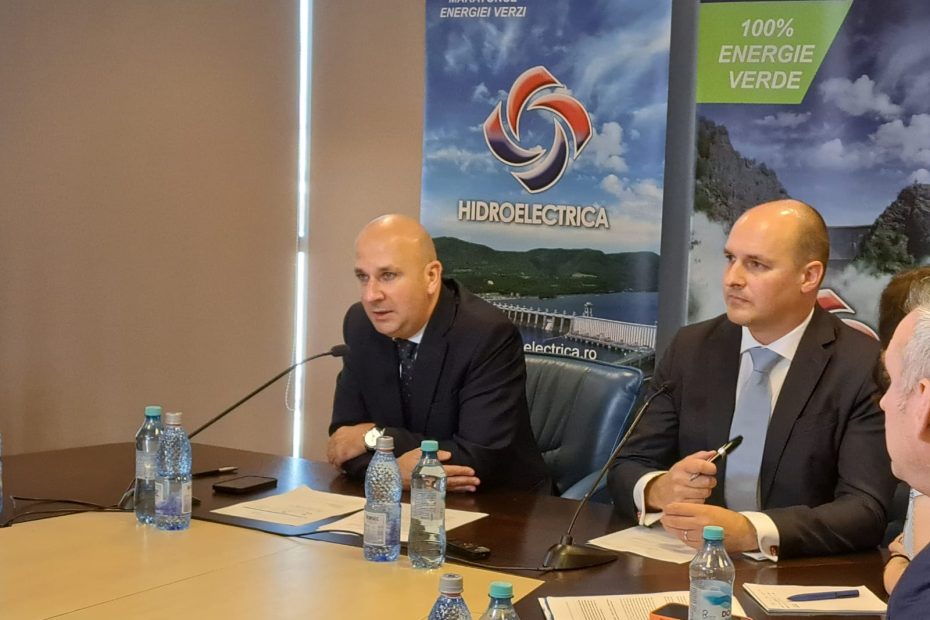Last year Fondul Proprietatea campaigned for a dual IPO, to take place both on the Bucharest and London markets, through global depositary receipts (GDRs). A dual listing would have increased both capitalization and investor pool. In the end, however, it was decided that the listing would take place only in Bucharest. Initially, Fondul Proprietatea expected, last year, that the listing on the stock exchange of at least 15% of Hidroelectrica’s shares would generate major interest from investors and lead to a transaction of 2-3 billion dollars. The condition was that the listing was dual, on the Bucharest Stock Exchange and the London Stock Exchange.
“The decision to list ourselves on the Bucharest Stock Exchange is based on the decisions of the shareholders at the level of the Proprietatea Fund,” told Energynomics Johan Meyer, General Manager of the FTIS branch in Bucharest and Portfolio Manager of the Proprietatea Fund, during the conference of press of Friday, June 23, 2023.
“This means a lot for the capital market in Romania. I think we are hitting a number of records in terms of the potential size of the transaction, and we are very pleased to be in this position,” Johan Meyer told us.
“We had to help the Bucharest Stock Exchange,” the new Minister of Energy, Sebastian Burduja, told Energynomics, during a press meeting.
“Indeed, a local listing is valuable here. All the Romanian companies that listed outside did not have a large liquidity there,” commented an expert, for Energynomics. “However, the Hidroelectrica IPO, although a very large transaction, compared to the current size of the Romanian market, is no longer the size of 10 years ago,” explained the quoted source.
“There are arguments for and against a dual listing. Obviously, a dual listing mobilizes a larger number of investors. But, there is a larger size of the institutional investors in Romania now, and retail, and how much money are in deposits…the market is no longer like it was 10 years ago…Also, liquidity was very reduced for GDRs. For us, as Romanians, it made sense to keep liquidity here. There are other large CEE companies, such as CEZ or MOL, listed on their own market. Otherwise, how can you develop your own market? There are strong arguments from the point of view of creating a critical mass. We complain – why are there not many analysts in the market – well, if you don’t have liquidity, strong brokerage companies, to hire analysts and cover many companies – if the big firms leave…”
”Obviously, FP was right, as a seller, that a dual listing mobilizes outside investors much more easily. But, on the other hand, Romania is no longer what it was 10-15 years ago. Now the pension funds have 21 billion euros in assets, on Pillar II. The others – PIII have over 700 million euros in assets. They reflect the structure of the local stock market. We already have an accumulation of non-bank capital, through pension funds and a significant one in mutual funds. However, the market of bonds and shares must be developed through issuers, because without it, mutual funds will invest in foreign issuers, and you say that you are financing the economy, but you are not financing the Romanian one, but the one outside,” commented the cited source, for Energynomics.
FP campaigned last year for a dual listing
According to a document of Fondului Proprietatea (FP) from last year, consulted by Energynomics, “to ensure the success of the IPO, the listing of Hidroelectrica needs to take place both on the BVB, as the main market, and on an international capital market – for example the London Stock Exchange (LSE).
“There is a large gap between the local capital markets in the Central-Eastern Europe region and established financial centers in terms of available funds and liquidity… Even by European and international standards, the Hidroelectrica IPO would represent a very large transaction. Given that the deal size is expected to exceed 2 billion Euros, banks would be very concerned about the deal risk if the listing were to take place only on the BSE…The placement is expected to be much larger than what can absorb local market: 2.5 –3.0 billion USD. Without a dual listing, the company’s IPO could fail,” said the FP document issued in May 2022, consulted by Energynomics.
“For a successful IPO, the gross demand i.e. the cumulative value of orders placed by investors in a certain IPO, needs to be between 2-3 times the size of the actual IPO (allocated demand). A successful IPO provides a fair valuation of the company in the IPO and supports the company’s share price once it is listed. This means that for an IPO of 15% of Hidroelectrica, it is necessary to generate a gross demand of over 6 billion Euros,” claimed at that time FP.
The document also showed that, if the gross demand in the case of a listing that would take place only on the BSE would be only 1-1.5 billion euros, the dual listing would mean a gross demand of 3.0-6.0 billion euros, which would determine an increase in the value of the IPO from 0.5-0.7 billion euros exclusively on the local market to 1.5-2 billion euros, in case of dual listing. As the seller in the IPO, Fondul Proprietatea can ensure that at least 50% of the shares are allocated to investors on the BVB.
“Listing on an international market will decisively support BVB’s transition to emerging capital market status. After the IPO, most of the liquidity will be on the BSE and also a significant part of the investors who initially participated in the international listing will transfer to the BSE,” the cited document also revealed.

